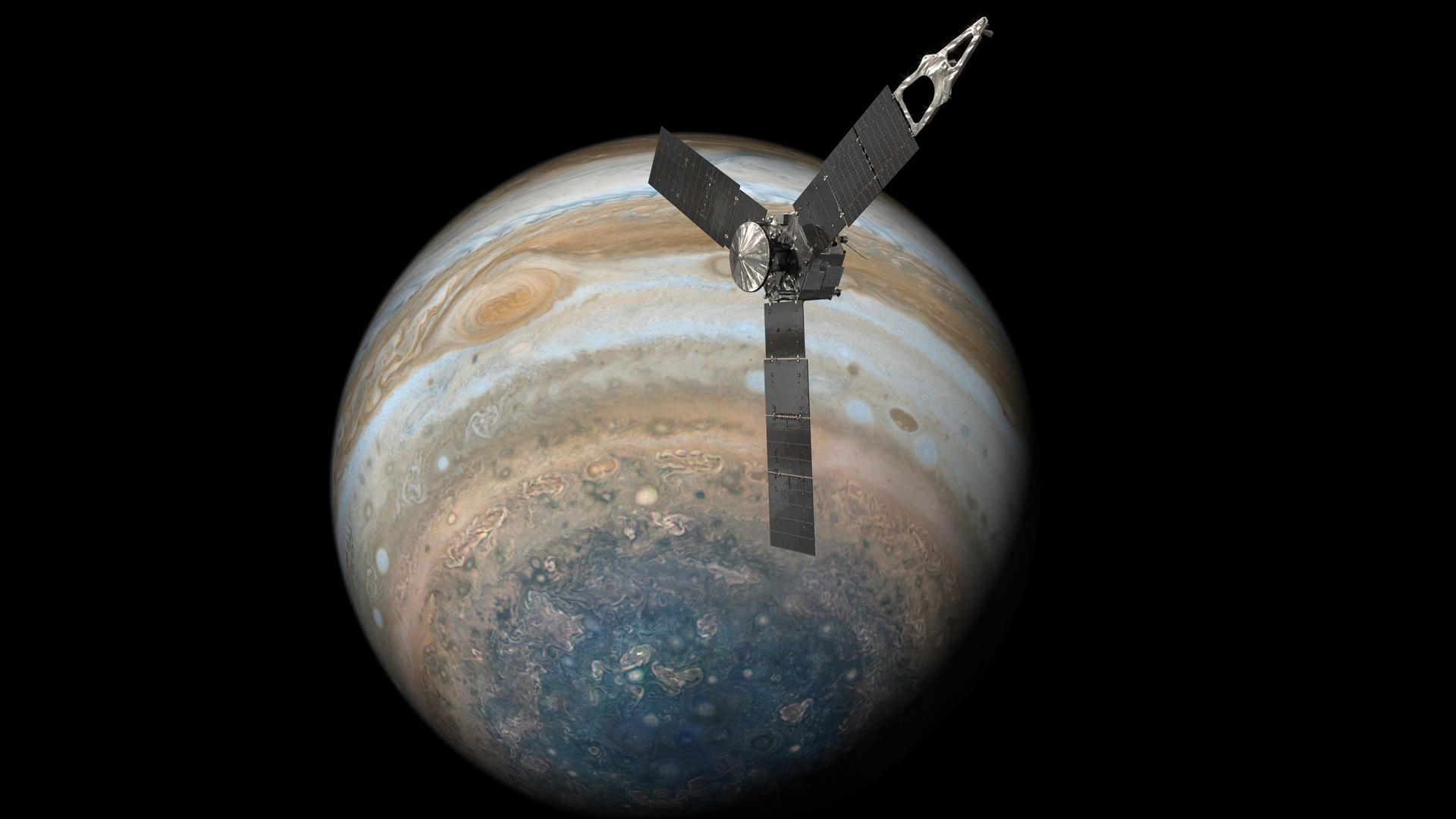Juno spacecraft recovering its memory after mind-blowing Jupiter flyby, NASA says
NASA's Juno spacecraft is recovering its memory after a download disruption following its December flyby of Jupiter.

NASA's Juno probe is continuing to recover its memory at Jupiter after a data disruption interrupted communications between the spacecraft and its operators on Earth following a flyby of the giant planet in December.
The Juno spacecraft's latest flyby of Jupiter, its 47th close pass of the planet, was completed on Dec. 14. But as its operators at NASA's Jet Propulsion Laboratory were receiving science data from the flyby they found they could no longer directly access the spacecraft's memory.
The team successfully rebooted Juno's computer and on Dec. 17 they placed the spacecraft into "safe mode" with only essential systems operating as a precaution. As of a Dec. 22 NASA update, steps taken by the team to recover Juno's science data had been proceeding positively. Juno's operators are now successfully downlinking the flyby data.
"The science data from the solar-powered spacecraft's most recent flyby of Jupiter and its moon Io appears to be intact," NASA wrote in the update.
Related: The 10 most massive mysteries of Jupiter
The interruption is currently believed to have been caused when Juno flew through the intense radiation of a portion of Jupiter's magnetosphere. There is no indication that the radiation spike has damaged data from its close approach to Jupiter or its flyby of the volcanic Jupiter moon Io.
The remaining data from Juno's latest flyby is expected to be beamed back to Earth the next few days at which point operators can assess if it has been affected by the disruption.
Breaking space news, the latest updates on rocket launches, skywatching events and more!
Juno left Earth in August 2011, traveling 1.7 million miles and entering orbit around the gas giant planet 5 years later on July 4, 2016. Becoming the first spacecraft to see through Jupiter's dense clouds, Juno’s aim was to answer questions about Jupiter’s composition and origins.
Related: NASA's Juno spacecraft snaps its most detailed view of icy moon Europa
Juno takes 53 Earth days to orbit Jupiter, with its primary mission of Juno calling for 35 orbit, during which it collected 3 terabits of scientific data and some incredible images of Jupiter and its moons. Because Jupiter is thought to be the solar system's oldest world, learning more about it could reveal information about the formation of the solar system itself.
This data changed many of the ideas planetary scientists had about Jupiter’s atmosphere and interior by revealing an atmospheric weather layer stretching far beyond its water clouds as well as a deep interior with a dilute heavy element core.
The spacecraft’s primary mission ended in July and the spacecraft is expected to continue its extended science operations until at least 2025 according to the Planetary Society.
The spacecraft was expected to exit safe mode this week and will make its next flyby of Jupiter on Jan. 22, 2023.
Follow us on Twitter @Spacedotcom or on Facebook.

Robert Lea is a science journalist in the U.K. whose articles have been published in Physics World, New Scientist, Astronomy Magazine, All About Space, Newsweek and ZME Science. He also writes about science communication for Elsevier and the European Journal of Physics. Rob holds a bachelor of science degree in physics and astronomy from the U.K.’s Open University. Follow him on Twitter @sciencef1rst.
